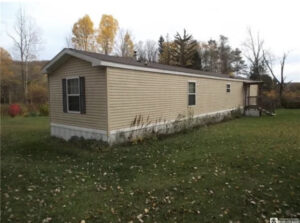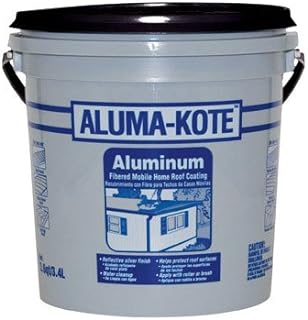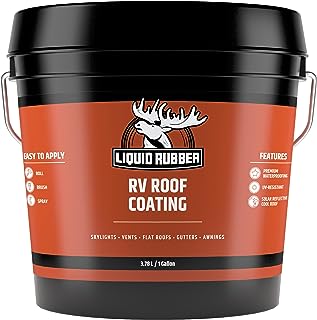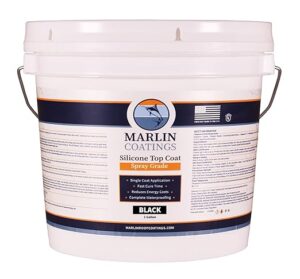Did you know that up to 80% of mobile home roofs fail due to weather damage? Protect your investment with a mobile home roof coating. Extend the lifespan of your roof, prevent leaks, and save on energy costs by applying a durable and weather-resistant coating. With easy application and long-lasting results, mobile home roof coatings are a cost-effective solution for maintaining your property. Say goodbye to frequent repairs and hello to peace of mind with this simple yet effective maintenance solution.
Key Takeaways
Regularly inspect your mobile home roof to identify any damage or wear caused by weather conditions.
Thoroughly clean the roof surface before applying any coating to ensure proper adhesion and effectiveness.
Promptly repair any cracks or leaks to prevent water damage and prolong the lifespan of your roof.
Address puddling issues on the roof to prevent water accumulation that can lead to leaks and structural damage.
Coat seams and joints with care to create a watertight barrier and enhance the durability of your roof.
Apply a protective reflective roof coating to improve energy efficiency, reduce cooling costs, and extend the life of your mobile home roof.
Weather Conditions for Coating
Temperature
Check the weather forecast before starting the mobile home roof coating process. Ensure the temperature is above 50 degrees Fahrenheit for optimal results.
Coating in lower temperatures can lead to improper adhesion and drying issues, affecting the overall quality of the coating.
Rain
Avoid coating during rainy conditions as moisture can interfere with the coating’s ability to adhere properly.
Rainwater can also dilute the coating, impacting its effectiveness and longevity.
Humidity
High humidity levels can prolong the drying time of the coating, leading to uneven application and potential damage.
Select a day with moderate humidity levels to ensure a smooth and efficient coating process.
Roof Inspection and Damage Assessment
Signs to Look For
Inspect mobile home roof for signs of blisters, cracked seams, and peeling roof coating. These issues can indicate underlying problems that need immediate attention.
Thorough Examination
Conduct a comprehensive inspection of the roof to identify any potential damage, even if there are no visible leaks. Detecting issues early can prevent costly repairs in the future.
Areas of Focus
Pay close attention to seals around the j-rail, roof seams, and flashing during the inspection. Ensuring these areas are intact is crucial for maintaining a sturdy roof.
Cleaning the Roof Surface
Prepare Surface
To begin, use a wire brush, coarse sandpaper, or putty knife to effectively eliminate any flaking roof coating. This step ensures a smooth surface for the new coating application.
Remove Debris
Clean the roof surface diligently, focusing on removing debris, dirt, and any loose materials that could hinder the adhesion of the new coating. A clean surface is crucial for optimal results.
Inspection Continuity
Ensure the continuity from the previous section by conducting a thorough inspection of the roof surface before cleaning. Identifying any damage beforehand is essential for effective restoration.
Proper Cleaning Techniques
Employ appropriate cleaning techniques such as power washing or scrubbing to eliminate stubborn dirt and grime. A clean surface promotes better adhesion of the new coating.
Importance of Preparing Surface
The preparation of the roof surface is paramount as it enhances the longevity and effectiveness of the new roof coating. Proper preparation ensures a durable and weather-resistant finish.
Repairing Cracks and Leaks
Patching Cracks
Repair splits and cracks on your mobile home roof by applying a durable roof patching compound. Ensure the area is clean and dry before application.
Fixing Holes
Patch any holes in the roof using a compatible roofing sealant. Apply the sealant generously to prevent water seepage into your home.
Reattaching Loose Screws
Inspect the roof for loose screws and fasteners. Use a screwdriver to reattach them securely to avoid potential leaks during rainstorms.
Treating Mildew Spots
If you notice mildewed spots on the roof, create a mixture of diluted chlorine bleach and water. Gently scrub this solution onto the affected areas to eliminate mildew growth effectively.
Rinsing with Detergent
After addressing cracks, holes, and mildew, rinse the entire roof surface with a powerful detergent solution. This step ensures that the roof is thoroughly cleaned and ready for coating application.
Patch cracks promptly to prevent further damage.
Use appropriate sealants for different types of roof materials.
Regularly check for loose screws or fasteners to maintain a secure roof structure.
Mobile Home Roof Coatings Shipped Directly to Your Doorstep – Click here
Addressing Puddling on the Roof
Check Puddles
Inspect the roof surface regularly for any puddles that may have formed after rain. Puddling can indicate low spots or improper drainage.
Look for areas where water accumulates and mark them to address potential issues causing the puddling.
Address Underlying Issues
Identify and fix any underlying problems leading to mildew growth or water accumulation on the roof. Addressing these issues promptly can prevent further damage.
Ensure that the roof structure is sound and free from any defects that may contribute to water pooling.
Apply Metal Primer
Cover deteriorated areas with a metal primer to protect them from further damage. This step helps in sealing any exposed surfaces and preventing moisture penetration.
Metal primers provide a protective layer that enhances the durability of the roof coating over time.
Ensure Proper Drainage
Maintain proper drainage systems to prevent water accumulation on the roof surface. Good drainage prevents puddles from forming and protects the roof from potential leaks and damage.
Clear debris from gutters and downspouts regularly to ensure efficient water flow off the roof.
You might be interested in our article: Water Leak Under a Mobile Home

Coating Seams and Joints
Patching Cement
Use a stiff bristle paint brush to coat all seams and edges of flashing with patching cement. This step is crucial for ensuring a watertight seal on the roof. By applying patching cement, you effectively fill any gaps or holes in the seams, preventing water infiltration.
Screw Heads
Pay attention to covering screw heads with patching cement as well. These small elements are often overlooked but can lead to significant leaks if left exposed. Properly sealing screw heads enhances the overall integrity of the roof coating, protecting your mobile home from potential damage.
Thorough Application
Ensure thorough and even application of the coating to seal all joints effectively. Using a sprayer or roller can help achieve a consistent finish across the entire roof surface. By focusing on complete coverage, you enhance the adhesion of the coating to the underlying materials, extending its longevity and durability.
Benefits of Proper Sealing
Prevents leaks and water damage
Enhances the lifespan of the roof coating
Improves overall structural integrity
Applying Protective Roof Coating
Tools Needed
To apply roof coating effectively, gather essential tools like a paint roller or a roof-coating brush. These tools ensure a smooth and even application.
Ensure the roof surface is clean and dry before starting the coating process. Remove any debris or dirt that could affect the adhesion of the coating.
Applying the Coating
Start by stirring the coating thoroughly to achieve a consistent texture. Pour a sufficient amount into a paint tray for easy access during application.
Using a paint roller, begin applying the roof coating in even strokes, working from one end of the roof to the other. Ensure an even layer across the entire surface.
Allow each coat to dry completely before applying additional coats. This drying time is crucial for the durability and effectiveness of the protective finish.
Drying Time and Curing
After applying each coat, allow ample time for it to dry according to the manufacturer’s instructions. This ensures proper curing and adherence to the roof surface.
Inspect the roof carefully after each coat has dried to check for any missed spots or areas that may need additional coating. Touch up these areas as needed.
Once all coats have been applied and dried thoroughly, your mobile home roof will be well-protected against environmental elements and wear.
Benefits of Reflective Roof Coatings
Energy Efficiency
Choosing a reflective roof coating can significantly improve the energy efficiency of your mobile home. By opting for a white coating, you can reduce cooling costs, especially in regions with warmer climates. The reflective nature of these coatings helps in lowering energy bills by effectively reflecting sunlight and minimizing heat absorption.
Cost Savings
One of the key advantages of using reflective roof coatings on your mobile home is the potential for substantial cost savings. These coatings work by reflecting a large portion of the sun’s rays, which in turn reduces the amount of heat that penetrates into your home. As a result, you can expect to see a noticeable decrease in your cooling expenses, making it an economically wise choice in the long run.
Environmental Impact
In addition to the financial benefits, opting for a reflective roof coating also has a positive impact on the environment. By reducing the amount of heat absorbed by your mobile home, you are indirectly contributing to lower energy consumption. This not only benefits your wallet but also helps in reducing overall carbon emissions, making it an eco-friendly choice for homeowners.
Longevity and Durability
Another advantage of investing in a reflective roof coating for your mobile home is the enhanced longevity and durability it provides. These coatings act as a protective barrier against harsh weather conditions, UV radiation, and other external elements that can cause damage to your roof over time. By extending the lifespan of your roof, you can save on costly repairs and replacements down the line.
Maintenance Ease
When you opt for a reflective roof coating, you are also choosing convenience in terms of maintenance. These coatings require minimal upkeep compared to traditional roofing materials, saving you both time and effort in maintaining your mobile home’s roof. With less maintenance required, you can enjoy peace of mind knowing that your roof is well-protected without constant intervention.
Maintaining and Enhancing Roof Lifespan
Regular Maintenance
Maintain your metal roofs by applying roof coatings every 2 years to ensure warranty compliance. These coatings act as a protective layer, extending the life of your roof.
Regular touch-ups are essential to address any minor damages promptly. By doing so, you prevent larger issues that may arise if left unattended.
Longevity and Cost-Effectiveness
Investing in routine inspections and maintenance for your mobile home roof is crucial. It not only ensures the longevity of your roof but also helps in avoiding costly repairs down the line.
By regularly coating your roof, you enhance its durability, making it more resistant to harsh weather conditions such as UV rays and heavy rainfall.
Preventive Measures
Proper maintenance can significantly extend the lifespan of your mobile home roof. Coatings provide an extra layer of protection against wear and tear, ultimately saving you money on potential repairs.
Regular inspections allow you to identify any early signs of damage, enabling you to address them promptly before they escalate into more significant issues.
Summary
You’ve learned about the crucial steps involved in coating your mobile home roof to enhance its durability and lifespan. By considering weather conditions, inspecting for damage, cleaning the surface, and applying protective coatings, you can significantly improve your roof’s performance. Addressing cracks, leaks, and puddling promptly will prevent further damage and ensure long-term protection. Reflective coatings offer added benefits such as energy efficiency and UV protection, contributing to a more sustainable and cost-effective solution. Regular maintenance will help preserve your roof’s integrity and prolong its lifespan.
Take action today by implementing these strategies to protect your mobile home roof. By following these guidelines, you can safeguard your investment and enjoy a secure and long-lasting roofing solution.
Frequently Asked Questions
Can I apply roof coating in any weather conditions?
Yes, it’s crucial to coat your mobile home roof during dry and mild weather. Avoid coating during rainy or extremely hot conditions for the best results and proper adhesion.
How do I address puddling on my mobile home roof?
Puddling can lead to water damage. Ensure proper drainage by leveling low spots and clearing debris from gutters. Addressing this issue promptly helps maintain your roof’s integrity.
What are the benefits of using reflective roof coatings?
Reflective coatings can reduce energy costs by reflecting sunlight, lowering indoor temperatures, and extending the lifespan of your mobile home roof. They also help in reducing environmental impact.
How often should I maintain my coated mobile home roof?
Regular maintenance is key to preserving your roof coating. Inspect for damage annually, clean as needed, and recoat every 5-10 years depending on the product used and weather conditions.
Is it necessary to repair cracks and leaks before applying a new coating?
Yes, addressing cracks and leaks is essential before coating your mobile home roof. Repairing these issues prevents further damage, ensures proper adhesion of the coating, and prolongs the roof’s lifespan.
You may be interested in these articles as well:
2023 Mobile Home Cost: How Much To Buy
Best Paint for Mobile Home Walls: A Complete Guide
Mobile Home Repair: DIY Projects, Professional Services and Maintenance




